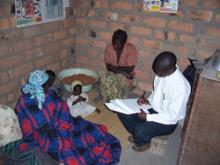
**THIS COURSE IS BEING REVIEWED AND UPDATED. LAUNCH DATE IS TBD**
Surveillance plays a fundamental role in public health. HIV surveillance systems monitor the magnitude and trends in the prevalence of infection and risk behavior. Data from HIV surveillance systems are used for evidence-based program planning. This course will provide a background of the HIV epidemic, an overview of HIV surveillance systems and a basic understanding of HIV surveillance components.
Objective
By the end of this course, learners will be able to:
- Describe the impact of the HIV/AIDS worldwide epidemic
- Explain the basic biology of HIV, transmission routes, and natural history of HIV
- Describe the major elements of HIV prevention and control programs
- Recognize that HIV is treated with antiretroviral drugs and that treatment also involves prevention and treatment of opportunistic infections
- Provide a basic understanding of public health surveillance
- List the core elements of HIV/AIDS surveillance
- Understand the importance of methods involved in carrying out HIV/AIDS surveillance
- Provide an overview of the types of epidemics
Credits
Collaborating organizations involved in the development of HIV/AIDS Surveillance include:
- Centers for Disease Control
- Office of the Global AIDS Coordinator
- United States Agency for International Development
The content of this course is primarily adapted from the following three manuals:
- Introduction to HIV, AIDS and STI Surveillance for Africa Region: Module 1: Overview of the HIV/AIDS Epidemic with an Introduction to Public Health Surveillance
- Introduction to HIV, AIDS and STI Surveillance for Asia: Module 1: Overview of the HIV/AIDS Epidemic with an Introduction to Public Health Surveillance
- The Global HIV/AIDS Situation and the HIV/AIDS Epidemic in the Caribbean
The principal manual, Introduction to HIV, AIDS and STI Surveillance for Africa Region, was prepared by the United States Department of Health and Human Services, Centers for Disease Control and Prevention (HHS-CDC), Global AIDS Program (GAP) Surveillance Team in collaboration with the Regional Programme on HIV/AIDS of the World Health Organization (WHO), Regional Office for Africa (AFRO), and the University of California at San Francisco (UCSF), Institute for Global Health, AIDS Research Institute through the University Technical Assistance Program (UTAP) with CDC/GAP.
Time
- 2 hours
Published/Updated
- Monday, May 10, 2010
